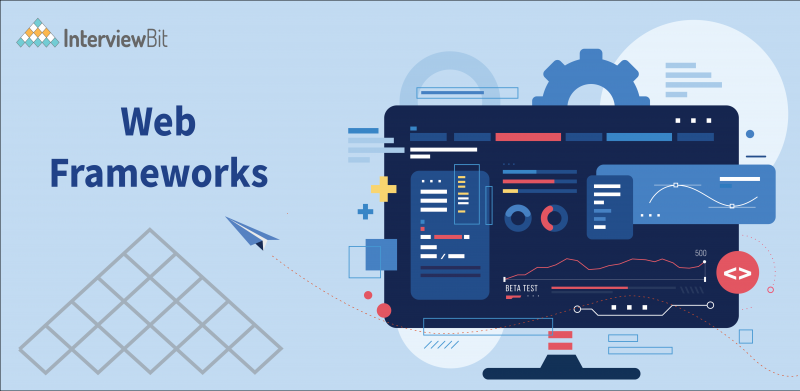- What are Web Frameworks?
- Types of Web Development Frameworks
- Top Frameworks for Web Development
- Conclusion
- FAQs
- Q.1: Which Web development framework is most used?
- Q.2: What is meant by the framework in web development?
- Q.3: What are Web framework examples?
- Additional Resources
In this evolving world, a Website has become crucial for businesses to establish a prominent online presence. Even retailers who are heavily reliant on physical visits have switched to the Internet to expand their reach. Websites with intuitive and sophisticated designs are the most effective means of attracting new users. There are a number of notable names transforming the web app experience, including Netflix, Instagram, LinkedIn, Facebook, and YouTube. What do these giants have in common that has enabled them to deliver high-performance applications? It is a reliable web application framework. Web frameworks are essential for building robust, interactive, and robust applications for both the frontend and backend.
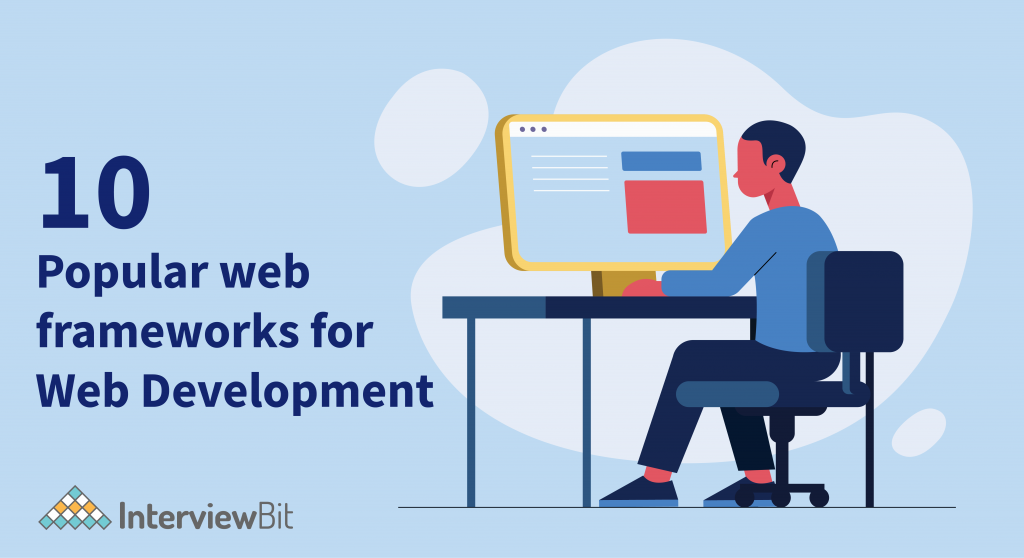
Whether it is for the development of a simple static website or a complex SaaS application, there are a multitude of web development frameworks available in the market. To choose the best web development framework for your business, you need to brainstorm and explore the functionalities of each framework. You will likely end up scratching your head; therefore, we are providing you with a list of the 10 best web development frameworks that will make this process super easy and simple.
But, before we begin diving into these web development frameworks, let us first understand what exactly is a Web Framework and why they are important.
Confused about your next job?
What are Web Frameworks?
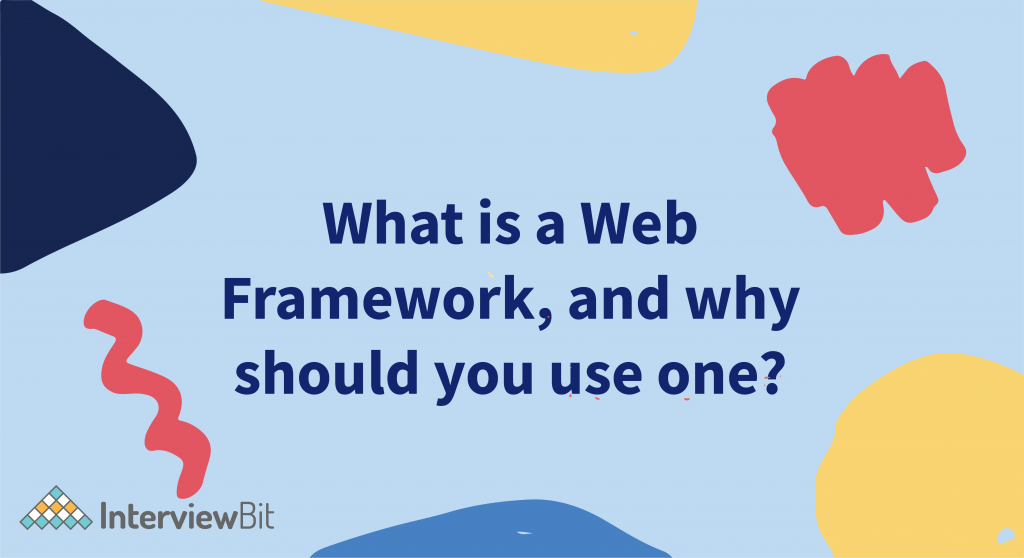
Web Development Framework or simply “web framework” is a software framework that offers a set of tools to support developing web applications including web services, web resources, and web APIs (Application Programming Interfaces). Web development framework offers a wide range of prewritten components, code snippets, and entire application templates to ease the work of web developers. Frameworks provide standardized development and design conventions that can be applied and modified to fit the needs of your website. The purpose of a web development framework is to automate the common tasks performed during the development phase. Frameworks give us a place to start so that we can focus on features rather than configuration details.
Frameworks are necessary, but why?
- Improves Code Efficiency & Reusability: For developers, web frameworks offer a fast, efficient, and responsive coding environment. Frameworks also provide advanced features like hot reloading and live reload, resulting in shorter development cycles.
- Reduce Complexity and Eliminate Error: The framework streamlines the development process and avoids errors and bugs. The framework takes care of all the background details such as data binding and configuration, so you can fully focus on your application.
- Bootstrap Development: A variety of tools and packages are available to help developers jumpstart their development processes. The use of frameworks prevents programmers from writing all scripts from scratch. Even if you don’t have extensive experience in web development, frameworks can help you explore specific features as eagerly as a more experienced developer.
- Reduce Code Length: Frameworks eliminate the need to write lengthy code lines for adding standard functionality to a website. By providing code generation features, frameworks simplify and condense the development process for developers. The predefined codebase allows developers to carry out easy modifications and bootstrapping.
- Reduce Work-Labor: Additionally, frameworks offer tools and functions that enable developers to automate traditional tasks like URL mapping, authentication, caching, etc., which in turn reduces work-labor.
- Better Security: Frameworks have built-in security mechanisms and features that help developers safeguard websites against present and future security threats. Frameworks can be used to protect websites against cyberattacks such as data tampering, SQL injection, DDoS (Distributed denial of service), etc. You can also build custom security specifications for websites using open-source web frameworks.
- Easy Debugging and Maintenance: Most frameworks include built-in testing and debugging capabilities. As a result of code reusability and standard practices, your application is already easier to maintain and understand. You can easily maintain and update your app with features like code completion, unit testing, simultaneous code editing, and more.
Types of Web Development Frameworks
Web frameworks are generally classified into two categories: front-end (client side) and back-end (server side) frameworks. Some frameworks allow development on both ends, called full-stack frameworks..
- Front-end Frameworks (client side): A client-side framework is used for dealing with user interfaces. The frontend of a web application is the part you see and interact with. A website’s user experience is of paramount importance to any business. Although complex operations and functions may occur in the background, what users experience and see must be seamless. In order to do this, frontend frameworks are used that facilitate the development of interactive, user-centric websites.
- Back-end Frameworks (server side): Frameworks for backend web development are nothing more than libraries of modules and tools that assist developers in creating website structures. The backend consists of the server, the database, and the code that interacts with them. A server-side framework ensures that the website functions smoothly in the background. They simplify the common web development tasks such as URL routing, database interaction, user authentication, enhanced security, push notifications, etc.
Top Frameworks for Web Development
With today’s technology market bursting with web development frameworks, picking the right one can be difficult, especially when there are so many options. Here goes the list of the top web development frameworks you should know about, along with the features that make them stand out from the rest.
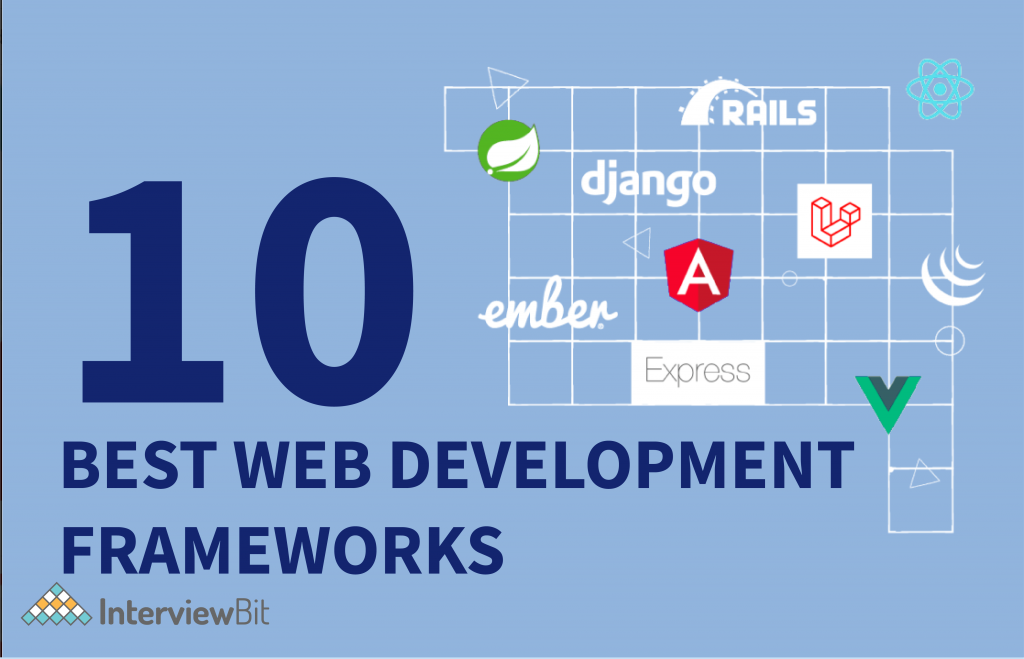
Front-End Frameworks
Front-end frameworks are among the most innovative and pioneering aspects of web design and development. These frameworks determine the aesthetics, the user experience, and the visual appeal of web applications. It works to improve the look and feel of websites and mobile applications, in addition to increasing traffic. Let’s take a look at a few of them.
1. React
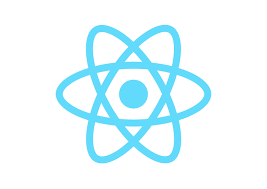
Meta (formerly Facebook) introduced React (or React JS) in 2013, and since then, it has gained tremendous popularity in the web development industry. In reality, React is an open-source JavaScript library that can be used to build interactive user interfaces that would entice any developer or business to use it for their front-end development. If you are building dynamic web applications or single-page applications, React would be a better choice. React can even be used to build mobile applications. It’s easy to learn, SEO-friendly, and flexible. React offers the best server-side rendering and excellent SEO support when compared to other front-end frameworks. A few of the most popular web applications that use React JS include Netflix, Instacart, Salesforce, Flipboard, Dropbox, Asana, etc.
Key Features
- Virtual Document Object Model (DOM) is a strong feature of React that enhances its functionality. With its virtual DOM, even heavy-load applications will perform smoothly and render quickly.
- Bundles frontend code into components.
- Organizes code and data to make code more reusable.
- In addition to its dominant position on the web, it has now captured a significant share of the mobile market with React Native, a cross-platform mobile development framework.
- In React applications, the information flow is unidirectional. One-way data bindings make React less prone to errors and easier to debug, making it an efficient framework.
- The flexibility of React allows developers to create applications that dynamically adapt to any user interface. Software engineers have used React to build applications for all kinds of user interfaces, including web, mobile, desktop, smart TVs, etc.
2. Angular
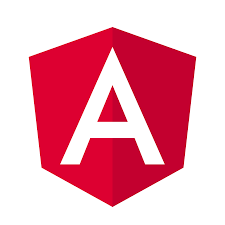
In 2010, Google introduced AngularJS, an open-source JavaScript framework. With the release of the rewritten version “Angular 2.0”, which enables the development of high-performance and large-scale JavaScript-based web applications, Angular stepped into the spotlight and snatched the attention of many big technological players.
With its robust set of features and ability to work with cross-platform and client-side frameworks, Angular applications run smoothly on both the web and mobile platforms. Angular promotes code consistency by using HTML, CSS, and TypeScript (a superset of JavaScript), in addition to web development tools. The use of TypeScript makes this the ideal framework for building enterprise-level applications. A few of the most popular web applications that use Angular JS include PayPal, Forbes, UpWork, Microsoft Xbox, etc.
Key Features:
- Angular reduces development time by using boilerplate coding (code sections that appear repeatedly with little or any changes).
- It reduces the build time by allowing developers to reuse components and even the architecture to simplify the development process. Additionally, it simplifies the testing process.
- Encourages reusability and improves application scalability.
- Using open-source libraries such as Angular Material and AgGrid, it’s possible to create a responsive and dynamic user interface with many features.
- Angular CLI (Command Line Interface) is regarded as one of the best command line interfaces for building, scaffolding, and maintaining web applications.
- To debug web applications, Angular supports or provides Chrome and Firefox Dev tools and extensions. The framework is also home to a wide range of third-party libraries.
3. Vue JS
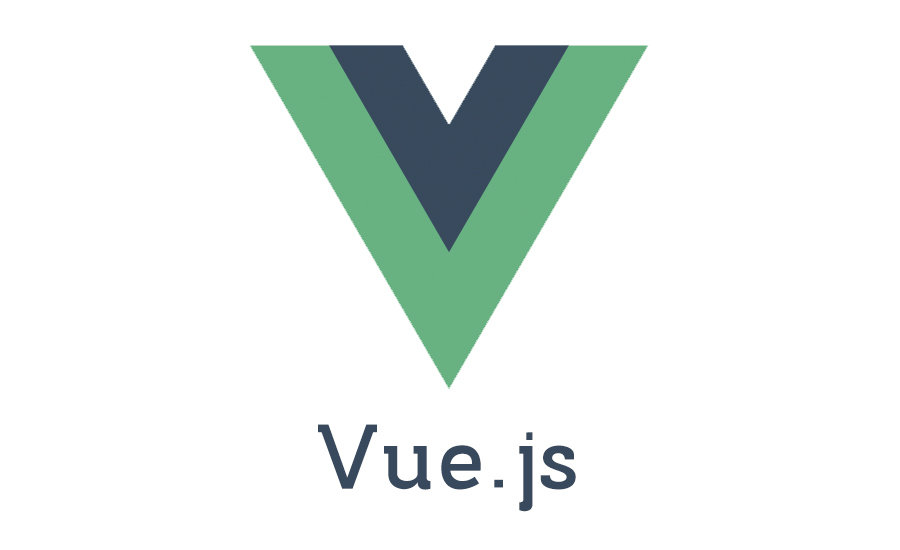
Vue JS is another cutting-edge open-source JavaScript framework capable of creating stunning and interactive user interfaces. Created by Google in 2014, it was designed to be the viable alternative to React and Angular for developing SPAs (Single Page Applications), high performance progressive web apps, and visually appealing user interfaces. It is a progressive JavaScript framework that combines the best features of React.js (Virtual DOM) and Angular.js (View Layer). Vue JS has cemented its position as one of the best web development frameworks for building responsive web applications due to its simplicity and versatility. Its flexible design structure and TypeScript support have drawn the attention of several web development companies and enterprises. A few of the most popular web applications that use Vue JS include Gitlab, Netlify, 9GAG, Behance, Chess, etc.
Key Features:
- The virtual DOM improves the performance of the application and the efficiency of DOM updates. Vue uses it to determine what parts of the DOM need to be re-rendered and which ones should be left intact.
- By making scaffolding and prototyping easier, Vice CLI serves as an easy-to-use framework for web development. In addition, it reduces the amount of time used to develop the project.
- There is reactive two-way data binding in Vue JS, which means any change made to the UI (user interface) will affect the data and vice versa.
- You can integrate this framework as a library or module into an existing application or build the entire application using it. This enhances the flexibility of the web application development process.
- By default, Vue.js is lightweight, which means it can be easily downloaded and installed. Moreover, Vue JS applications are very fast to launch, resulting in a seamless user experience. By integrating Vue JS elements into your existing code or app, you can easily customize an app according to your needs.
4. Ember JS
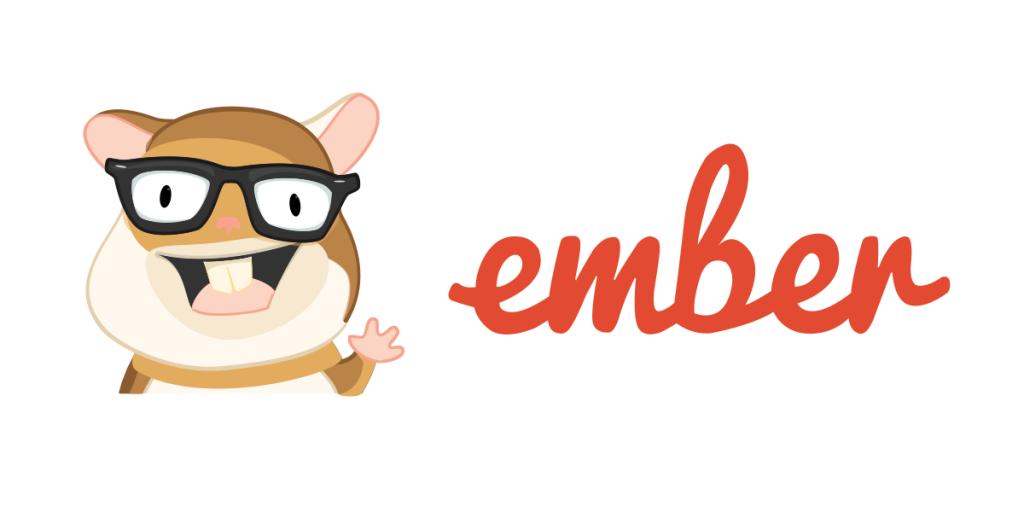
Ember JS launched in late 2011 and is considered one of the most productive open-source JavaScript frameworks utilizing the MVVM paradigm. It contains HTML (Hypertext Markup Language) and CSS (Cascading Style Sheets) at the core of the development model. After the release of Ember 2.0 in 2015, which included excellent stability, it became well-known for its ability to create maintainable and reusable JavaScript web applications. Ember is designed to maximize developer productivity either by eliminating time-wasting features or implementing JS best practices in the core design. It’s one of the top frameworks used to build single-page applications and dynamic client-side applications that can be extended by using general idioms and advanced practices. Mobile and desktop applications can also be developed using it. A few of the most popular web applications that use Ember JS include LinkedIn, Apple, DigitalOcean, Intercom, etc.
Key Features:
- Similar to Angular, it provides two-way data binding. It aims to satisfy the growing demand for contemporary technologies flawlessly.
- Because it is backwards compatible, old versions of applications will still function flawlessly even with new updates.
- All tools associated with it are packaged well
- Takes parts from Angular and React and optimizes them.
- A complete front end stack is provided by Ember JS, including a router, services, and asset pipeline. The router is a core feature of Ember.js, which is used to manage URLs.
- In Ember.js, there is a tool called Ember Inspector, which helps debug Ember applications.
- Using templates, embed.js automatically updates the model whenever the content of the application changes.
5. JQuery
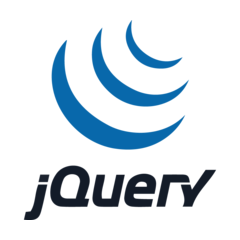
As one of the oldest players, JQuery is still thriving and enjoying the opportunity to be loved by developers. In 2006, it was released as an open-source, lightweight JavaScript library to help developers build robust web applications, and since then, it has gained a lot of popularity as a result of its rich features. It’s a small, fast JavaScript library that simplifies the interaction between HTML elements and JavaScript code. JQuery simplifies CSS animations, event handling, and Ajax calls, which makes web pages more interactive. A great benefit of using jQuery is that it adheres to SEO-friendly practices. There is no need to write extensive javascript code with JQuery since it’s simple and easy to use. A few of the most popular web applications that use JQuery include WordPress, GeeksforGeeks, Bitbucket, Trello, Codepen, etc.
Key Features:
- It is easy to select DOM elements, traverse them, and modify their content with jQuery. The methods available in JQuery such as .attr(), .html(), etc., simplify DOM manipulation.
- With jQuery, you can perform a series of actions on your website with a single click, such as starting an animation, sending data to servers, adding a class, etc. Thus, it shortens the process of binding and unbinding event handlers.
- Plugins are an essential part of JQuery, allowing developers to extend the functionality of a web application. You can find a large number of useful plugins on the web to enhance jQuery with functions such as Ajax helpers, data grids, XML and XSTL tools, dynamic lists, etc. These make developing web apps easy and quick.
- It combines markup technologies such as CSS, HTML, JavaScript, and AJAX to produce animations like Flash. Additionally, it comes with several built-in animation effects that help developers build feature-rich and responsive websites with AJAX.
- It is possible to achieve seamless integration between JavaScript and JQuery by using JQuery’s utility functions.
Back-End Frameworks
Web development is no longer possible without backend frameworks. For developers, finding the right framework is essential to attain optimal performance and scalability. Choosing a backend framework for your web development project will ensure that you get the highest performance, the fastest development, and the greatest flexibility possible. Let’s take a look at a few of them.
6. Ruby on Rails
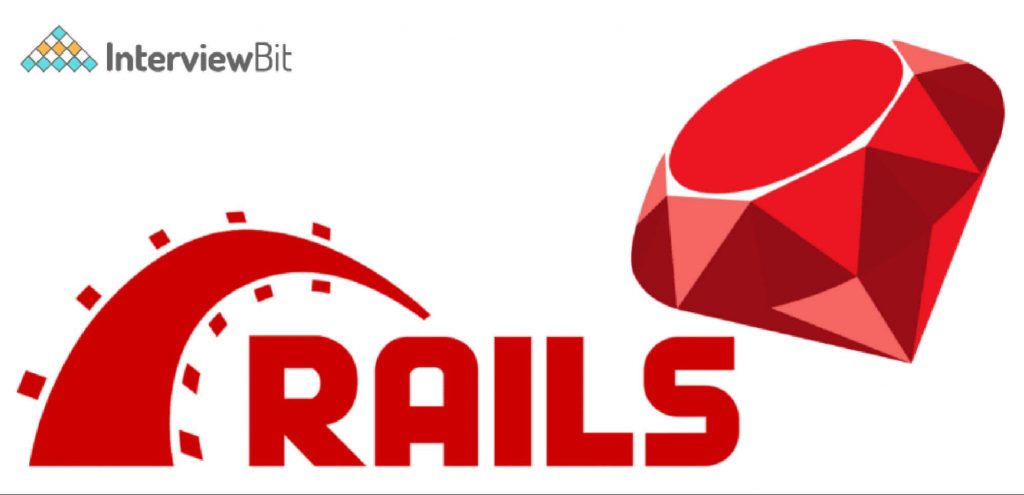
Ruby on Rails or Rails is a most popular open-source backend web development framework based on MVC (Model-view-controller) that emphasizes using some worthwhile and well-known software engineering patterns and paradigms like CoC (Convention Over Configuration), DRY (Don’t repeat yourself), and the active record pattern. Since being introduced in 2005, Ruby on Rails has grown into the leading backend framework that competes fiercely with all other web technologies. The framework is ideal for developing high-speed applications, and includes everything that is needed to build a database-driven application. With Ruby on Rails, an application can be developed ten times faster than other Java frameworks. A few of the most popular web applications that use JQuery include Github, Airbnb, Fiverr, Shopify, Slideshare, Basecamp, Hulu, etc.
Key Features:
- It facilitates and promotes using web standards (such as XML, JSON) for data transfer, as well as JavaScript, HTML, and CSS and for user interaction.
- Ruby on Rails has a powerful and robust library called the active record, which simplifies designing database queries.
- RSpec is a unit test setup included with Ruby on Rails that is easy to learn and use. It can be used to test the functions present in the application by calling them separately. In this way, you can ensure you have tested your application thoroughly.
- There are numerous libraries included in Ruby on Rails that simplify the coding of common programming tasks like form validation, session management, and so on.
- It equips developers with all essential tools to build a high-quality database access library, product AJAX library, and common tasks library.
- The Ruby on Rail syntax is simple, concise, more like the English language, and even flexible. Object-oriented programming languages like Ruby let you create virtual objects within your code.
7. Django

‘Django’ is a popular, open source Python-based back-end web development framework that is gaining popularity among developers and enterprises by making it easier to develop complex, highly scalable, and data-driven web applications. Programmers write readable, clean, and maintainable code with Python syntax rules, allowing them to build highly functional web applications. The framework is designed by experienced engineers, making it ideal for building API features like naive GraphQL integration. You can use this framework in any format, such as HTML, JSON, and XML. A few of the most popular web applications that use Django include YouTube, Instagram, Spotify, The Washington Post, BitBucket, etc.
Key Features:
- By default, Django preempts various security risks and issues such as cross-site request forgery (CSRF), cross-site scripting (XSS), and SQL injections.
- Due to its code reusability and caching options, Django is highly scalable, making the application capable of handling any traffic demand.
- It is built on top of Python and uses Model-View-Template architecture, which allows for robust handling of asynchronous and reactive programming.
- With Django, you can easily build any type of website, from news sites and social networks to content management systems (CMS).
- Django applications are SEO-friendly and easy to optimize because they are maintained through URLs rather than IP addresses.
8. Laravel

Laravel is the most popular open-source backend framework written in PHP (Hypertext Preprocessor) and was created by Taylor Otwell in 2011. Laravel has built-in API support, and it has a reasonable number of packages that could allow it to extend its capabilities. Whether it’s building web applications for small and medium-sized companies or large multi-million dollar corporations, this top-notch framework caters to every segment. Unlike other frameworks, Laravel offers expressive, elegant syntax that enables developers to be creative and flexible while still handling backend details. The primary purpose of Laravel is to make updating websites fun and simple. This is a popular choice among developers because of its great versatility, features, and execution. A few of the most popular web applications that use Laravel include Watchseries, Deltanet Travel, MyRank, Laracasts, Neighbourhood Lender, etc.
Key Features:
- Laravel conforms to the MVC (Model-View-Controller) architecture, which makes developing and deploying web applications easy and quick.
- The MVC provides several functions, boosts security and scalability, and aids better performance.
- This framework includes a built-in object-relational mapper (ORM) with PHP Active Record implementation. With an ORM, users can query databases using PHP syntax, without having to write any SQL code.
- Laravel’s applications are highly secure with its hashed and salted password methods. Salted passwords are generated by using the Bcrypt Hashing Algorithm, which means that the passwords are stored as encrypted passwords in a database, not as plaintext.
- There are lightweight templates in Laravel that can be used to create layouts and produce content. It also includes widgets with CSS and JS code that can be easily customized. Laravel templates are ideal for creating complex and simple sectioned designs.
- The Laravel framework comes with a built-in tool called Artisan that allows PHP developers to automate several repetitive programming tasks that they cannot accomplish manually.
9. ASP.NET
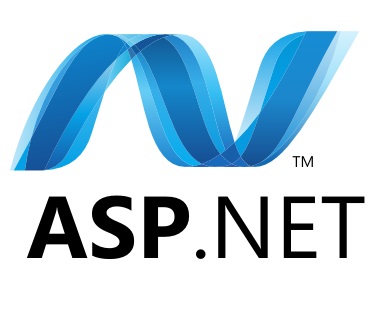
ASP.NET is a popular open-source web development framework that can be used to create dynamic web applications for PCs and mobile devices. It was created by Microsoft to keep up with the latest trends in web development, so that programmers could create dynamic websites, applications, and services. In 2016, ASP.NET Core was introduced; this new version of ASP.NET is enticing developers and businesses around the world with its scalability, flexibility, and high performance features. It has gained immense popularity since then for creating high-performing, secure, and modern web applications. Furthermore, it is compatible with JavaScript-based front-end frameworks. A few of the most popular web applications that use ASP.NET include TacoBell, Visual Studio, DELL, Stack Overflow, MarketWatch, GoDaddy, etc.
Key Features:
- A .NET Core application works seamlessly with any client-side framework, and it can be deployed throughout a range of platforms, including MacOS, Windows, and Linux.
- Asynchronous development is supported in ASP.NET Core (async/await), making this framework fast and improving app performance.
- ASP.NET Core combines Web API and MVC to simplify the process of creating APIs and make client-side implementation more feasible.
- One more important aspect of ASP.NET Core that makes it less complex is Razor Pages. This feature allows developers to build server-side rendered apps more quickly and efficiently.
- With JetBrains Rider, .NET Code Profiler, Visual Studio Code, and other excellent developer tools, it provides a seamless and fast application development experience.
10. Express
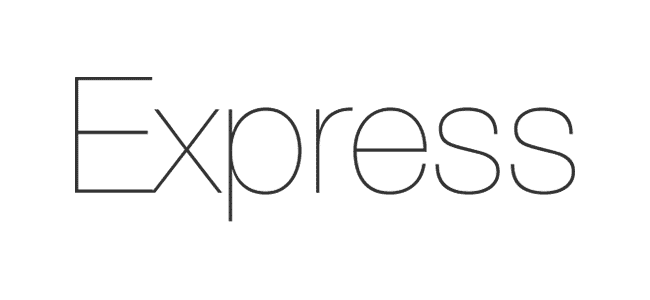
Express.js is an open-source, lightweight back-end framework for Node.js (JavaScript runtime environment), and is designed to build web applications, mobile applications, and APIs. Its robust features and minimalistic capabilities have made it very popular since its initial release. It provides the core features of a web application to an already feature-rich Node.js platform, making it a flexible framework. Express is one of the best backend frameworks with features such as debugging, routing, and fast back-end programming. It allows rapid development of Web applications based on Node.js. A few of the most popular web applications that use Express include PayPal, Freecodecamp, Coursera, Myntra, MuleSoft, Accenture, etc.
Key Features:
- Through its caching potential, it can dramatically reduce a site’s loading time by eliminating the need to execute code repeatedly.
- Express boasts an advanced routing system that allows preserving a webpage’s state using URLs.
- Express makes debugging more convenient by offering a debugging technique to figure out the precise parts of a web app containing bugs.
- Express comes with several template engines such as EJS, Jade, Pug, etc., to help you design HTML pages easily.
- It provides a middleware system and several HTTP methods that can be used to build Node.JS apps and APIs quickly.
- The framework can be used for creating multi-page, single-page, and hybrid web applications.
Conclusion
Frameworks have become an essential part of web development, as the standards of web applications are always rising, so does the complexity of the technology needed. Hence, using frameworks endorsed by thousands of developers worldwide is an excellent way to develop rich and interactive web applications. The number of Web Frameworks has grown tremendously in recent years and therefore choosing the right framework that suits the nature of your project is essential.
Listed above are the 10 best web development frameworks to help you create a stunning online presence for your business, so you can pick the one most suitable for your application. Using these popular frameworks to develop websites can significantly speed up your development process. Choose a framework and start with it – it’ll give you a better picture of how to go about things, and you’ll find many similarities between frameworks. Remember, to continue to grow, big companies always migrate and adopt new technologies. Therefore, their evolution can never come to a halt.
FAQs
Q.1: Which Web development framework is most used?
Ans: The most widely used web framework worldwide is React.js, which has surpassed jQuery. A survey found that 40.14% of developers prefer React.js as a web development framework.
Q.2: What is meant by the framework in web development?
Ans: In web development, frameworks are a group of resources and tools that software developers use to build websites, web applications, and web services. Developing and deploying web applications on the World Wide Web is made easier with web frameworks.
Q.3: What are Web framework examples?
Ans: Among the most commonly used web frameworks worldwide include React, Angular, Vue JS, etc., for front-end web development, while Ruby on Rails, Django, Laravel, etc., for back-end web development.


